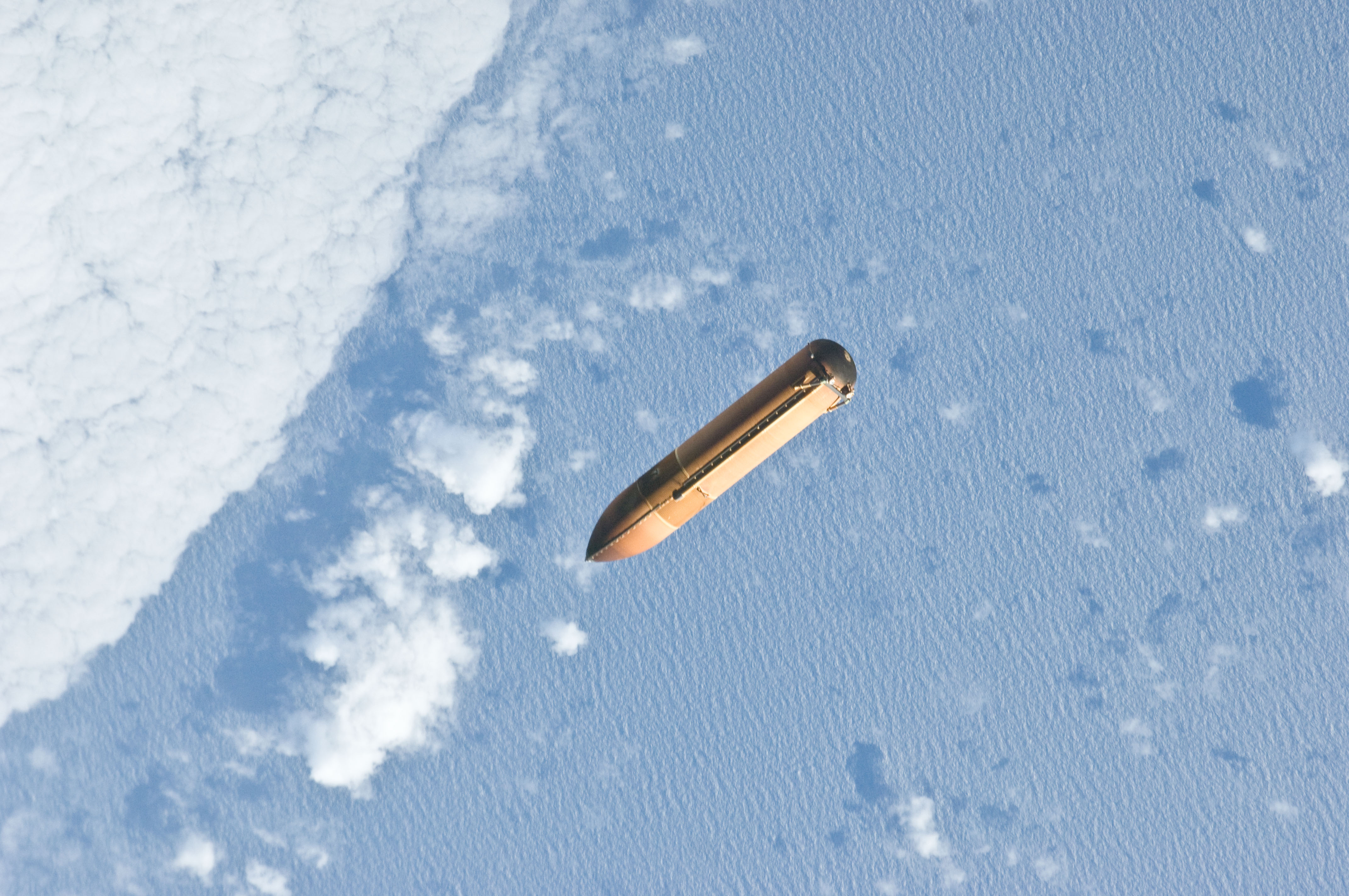List Of Large Reentering Space Debris on:
[Wikipedia]
[Google]
[Amazon]

 This is a list of artificial objects reentering Earth's atmosphere by mass (see
This is a list of artificial objects reentering Earth's atmosphere by mass (see

 This is a list of artificial objects reentering Earth's atmosphere by mass (see
This is a list of artificial objects reentering Earth's atmosphere by mass (see space debris
Space debris (also known as space junk, space pollution, space waste, space trash, or space garbage) are defunct human-made objects in space—principally in Earth orbit—which no longer serve a useful function. These include derelict spacecr ...
). Such objects are often completely destroyed by reentry heating, but large enough objects or components can survive. Most of the objects which reenter are relatively small; larger objects have survived but usually break up into smaller pieces during reentry.
The list includes group entries for the 134 Space Shuttle external tanks used between 1981 and 2011. During Space Shuttle
The Space Shuttle is a retired, partially reusable low Earth orbital spacecraft system operated from 1981 to 2011 by the U.S. National Aeronautics and Space Administration (NASA) as part of the Space Shuttle program. Its official program na ...
launches, the tanks reached space without reaching orbit and re-entered the atmosphere, breaking apart before impacting the ocean. The mass of those tanks varied throughout the years, as improvements made them lighter - successive modifications reduced their empty weight from approximately to approximately for the Super Lightweight Tank used after 1998. The tanks were also not necessarily completely empty when discarded.
Many other launch systems have discarded spent stages into space, but not all stages go into orbit
In celestial mechanics, an orbit is the curved trajectory of an object such as the trajectory of a planet around a star, or of a natural satellite around a planet, or of an artificial satellite around an object or position in space such as a p ...
or even reach space (by passing the Kármán line
The Kármán line (or von Kármán line ) is an attempt to define a boundary between Earth's atmosphere and outer space, and offers a specific definition set by the Fédération aéronautique internationale (FAI), an international record-keeping ...
). For example, the Space Shuttle side boosters did not reach space, as the highest altitude reached during their flight was only about 220,000 feet (67 km).
Examples of heaviest re-entering spacecraft or components
See also
* Center for Orbital and Reentry Debris Studies * Space Shuttle external tank *List of heaviest spacecraft
The heaviest artificial objects to reach space include space stations, various upper stages, and discarded Space Shuttle external tanks. Spacecraft may change mass over time such as by use of propellant.
During the Shuttle–Mi ...
* List of space debris producing events
Major contributors to space debris include the explosion of upper stages and satellite collisions.
Overview
There were 190 known satellite breakups between 1961 and 2006.
By 2015, the total had grown to 250 on-orbit fragmentation events.
t ...
References
{{reflist * *Space debris
Space debris (also known as space junk, space pollution, space waste, space trash, or space garbage) are defunct human-made objects in space—principally in Earth orbit—which no longer serve a useful function. These include derelict spacecr ...
Space debris
Space debris (also known as space junk, space pollution, space waste, space trash, or space garbage) are defunct human-made objects in space—principally in Earth orbit—which no longer serve a useful function. These include derelict spacecr ...